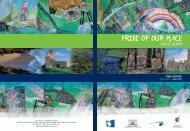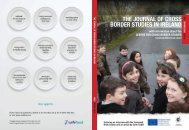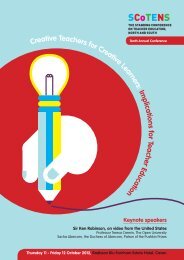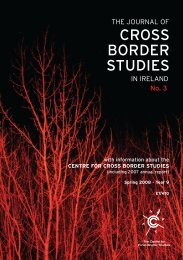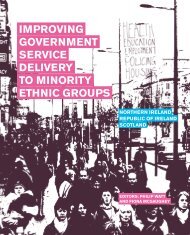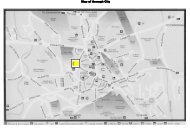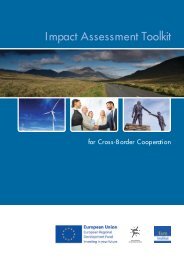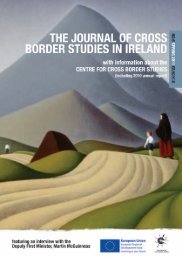4858 Mental Health Report - National University of Ireland, Galway
4858 Mental Health Report - National University of Ireland, Galway
4858 Mental Health Report - National University of Ireland, Galway
You also want an ePaper? Increase the reach of your titles
YUMPU automatically turns print PDFs into web optimized ePapers that Google loves.
Collaborative Practice and Policy<br />
An independent evaluation <strong>of</strong> the CAWT organisation has been carried out<br />
(Clarke & Jamison 2001). This evaluation found that the work <strong>of</strong> CAWT was<br />
mostly project-focused, very diverse and heavily dependent on EU grant funding.<br />
The majority <strong>of</strong> projects focused on training and education. However the few<br />
projects that involved patients on a cross-border basis did show clear benefits to<br />
the clients.<br />
It was found that CAWT provides a focus for cross-border working among senior<br />
management and that a rich network <strong>of</strong> contacts has been established across the<br />
border region. These new relationships have resulted in pr<strong>of</strong>essionals becoming<br />
more comfortable with the concept <strong>of</strong> cross-border working and as a result there<br />
is an increased awareness and enthusiasm about its future potential.<br />
EU Programme for Peace and Reconciliation<br />
The EU Programme for Peace and Reconciliation was launched in <strong>Ireland</strong> in 1995<br />
in response to the combined military ceasefires throughout Northern <strong>Ireland</strong> and<br />
the Republic during the previous year. The Programme consisted <strong>of</strong> seven sub<br />
programmes with sub programme 3 concentrating on cross border co-operation.<br />
There was a specific aim included to promote cross border reconciliation and<br />
development. Intermediary Funding Bodies, including the Northern <strong>Ireland</strong><br />
Voluntary Trust (NIVT), Co-operation <strong>Ireland</strong>, Area Development Management Ltd<br />
and the Combat Poverty Agency (ADM/CPA) were responsible for a significant<br />
part <strong>of</strong> its implementation (Northern <strong>Ireland</strong> Voluntary Trust et al. 1999).<br />
In 1999 these agencies commissioned an evaluation <strong>of</strong> the impact <strong>of</strong> cross-border<br />
work, and specifically considered the following:<br />
• An assessment <strong>of</strong> the impact <strong>of</strong> the cross-border projects themselves.<br />
• Consideration <strong>of</strong> the operational and strategic barriers to cross-border<br />
development.<br />
• Identification <strong>of</strong> opportunities for the future <strong>of</strong> cross-border development.<br />
• Highlighting good practice in cross-border co-operation.<br />
This evaluation found that there were many positive impacts to cross-border<br />
working, which included a high level <strong>of</strong> interest at a grassroots level in forming<br />
cross-border/cross-community networks resulting in 834 groups receiving funding<br />
for cross-border/community links. Promoter groups <strong>of</strong>ten made links in more than<br />
one area. While the majority <strong>of</strong> project links were formed within Northern<br />
<strong>Ireland</strong> and six Southern Border Counties, the ability <strong>of</strong> groups to form networks<br />
throughout <strong>Ireland</strong> and at a wider, international level, demonstrated the<br />
potential for future cross-border work in transcending problems associated with<br />
distance. Of those groups who were involved in cross-border work, 95% said that<br />
they would be definitely interested in further work <strong>of</strong> this kind.<br />
Some <strong>of</strong> the barriers identified in this evaluation include a lack <strong>of</strong> human<br />
resources/time to effectively implement projects. Cross-border projects are <strong>of</strong>ten<br />
additional to an organisation’s existing (core) work load and frequently the most<br />
82



